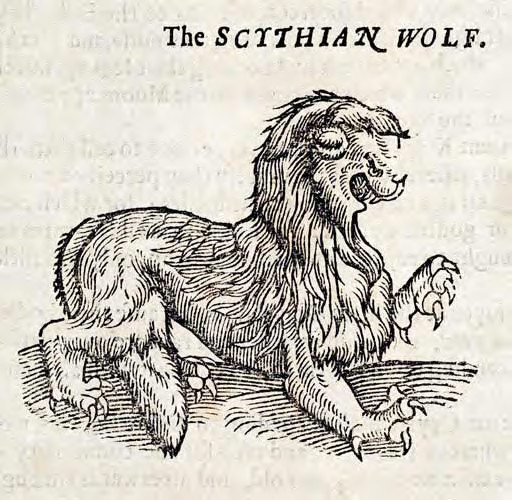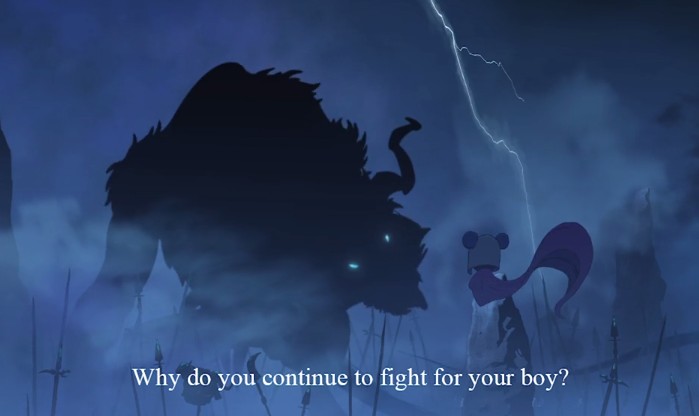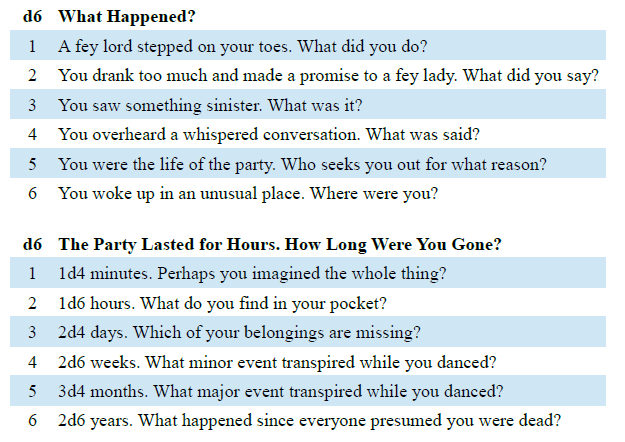As every adventurer learns, often the hard way, the “magical mixtures and compounds which comprise potions are not always compatible” (1E DMG, page 119). Mixing two potions, whether externally or internally, may cause devastating results. Everyone has heard about how Grunner the Gluttonous exploded after he imbibed both a potion of dragon control and a potion of fire resistance in rapid succession. If only he had eaten one of Mely’s Munificent Morsels before quaffing that second potion.

1E Stats
Mely’s Munificent Morsels: Usually found in a simply decorated wooden box about 1 foot wide, 1 foot long, and 3 inches think, Mely’s Munificent Morsels appear to be a selection of 10-20 fine chocolates that radiates magic if such can be detected. The candies are tasty and do not melt or spoil so long as they remain protected by their box. A creature already affected by a potion should consume a morsel before imbibing a second potion. If the creature does so, the d% roll on the Potion Miscibility Table (1E DMG, page 119) is modified by +25% if the dice score is less than 26. If the dice score is 26 or higher, the morsel has no effect (although it is tasty).
5E Stats
Mely’s Munificent Morsels
Wondrous item, uncommon
“A character might drink one potion while still under the effects of another. …. The strange ingredients used in creating potions can result in unpredictable interactions” (5E DMG, page 140), but these magical morsels can mitigate the possible negative effects. By consuming a morsel before drinking a second potion, the d100 result of the Potion Miscibility table is modified by +25% if the d100 result is less than 26. Otherwise, the candy has no effect other than pleasing the palate. Mely’s Munificent Morsels are usually found in a simple wooden box that preserves the chocolates from melting or spoiling. Such a box typically contains 2d6+8 chocolates.

Many cultures, especially those dwell in extreme environments such as the arctic or burning deserts, often place great emphasis on the importance of hospitality, even hospitality to strangers. Refusing a traveler lodging for the night during the winter months may be tantamount to a death sentence. At the same time, appearances can be deceiving. That haggard, sunburnt traveler may be some sort of monster in disguise. Such malevolent creatures violate the rules of hospitality, spreading xenophobic caution that has more than once caused an otherwise good person to refuse shelter to one in need. More than once, the one rejected has gone on to die of exposure, sickness, or hunger.
And so one evil causes another that gives rise to a third, a gwrthod, an undead monster motivated by conflicting desires to find acceptance and to terrorize those who offer hospitality to others. Gwrthods are not common monsters, but they are almost always encountered in communities. They hide during the day in lightless places, emerging at night to terrorize and murder.
1E Stats
Gwrthod
Frequency: Very rare
No. Appearing: 1
Armor Class: 8
Move: 9″/9″
Hit Dice: 6+6
% in Lair: 50%
Treasure Type: D
No. of Attacks: 2
Damage/Attack: 1-4 plus 1-4 cold/1-4 plus 1-4 cold
Special Attacks: See below
Special Defenses: See below
Magic Resistance: 30%
Intelligence: Very
Alignment: Chaotic evil
Size: M
Psionic Ability: Nil
Attack/Defens Modes: Nil
Level/XP Value: VII/1,075 XP + 8 XP/hp
A gwrthod appears to be haggard, emaciated humanoid with distorted features and twisted limbs. Its eyes are lightless holes. It prefers sleeping victims, but its gaze causes sleep capable of affecting creatures up to 8 Hit Dice (no saving throw). A sleeping victim can be simply murdered. Against conscious foes, a gwrthod attacks with its supernaturally cold claws. A victim who suffers cold damage from a claw attack must make a saving throw against death magic or lose 1 point of Wisdom and become slowed. The Wisdom drain is permanent, and a creature whose Wisdom drops to 3 or less becomes obedient to the gwrthod (as if affected by charm monster). A creature remains slowed for a cumulative 1-4 rounds per failed saving throw.
Once per day, a gwrthod can use phase door as if it were a 14th-level magic-user. It uses this power to gain access to victims as well as to riddle its lair with invisible portals. A gwrthod is immune to sleep, charm, and fear. It takes no damage from fire and cold, and it cannot be harmed by nonmagical weapons. A gwrthod can be turned as it were a spectre.
5E Stats
Gwrthod
Medium undead, chaotic evil
Armor Class 12
Hit Points 55 (10d8+10)
Speed 25 ft., fly 25 ft. (hover)
Ability Scores STR 11 (+0), DEX 15 (+2), CON 13 (+1), INT 12 (+1), WIS 16 (+3), CHA 14 (+2)
Skills: Perception +5, Stealth +4
Damage Immunities cold, fire, necrotic, poison; bludgeoning, piercing, and slashing from nonmagical attacks
Condition Immunities charmed, exhausted, frightened, poisoned, paralyzed
Senses darkvision 60 ft., passive Perception 15
Languages Any languages it knew in life
Challenge 3 (700 XP)
Innate Spellcasting: The gwrthod’s innate spellcasting ability is Charisma (spell save DC 12). It can innately cast the following spells, requiring no material components.
At will: charm person (only against a target damaged by its cold touch), misty step
Magic Resistance: The gwrthod has advantage on saving throws against spells and other magical effects.
Sleep Gaze: When a creature that can see the gwrthod’s eyes starts its turn within 30 feet of the gwrthod, the gwrthod can force it to make a DC 13 Constitution saving throw if the gwrthod isn’t incapacitated and can see the creature. If the saving throw fails, the creature falls unconscious (as if affected by a sleep spell). Unless surprised, a creature can avert its eyes to avoid the saving throw at the start of its turn. If the creature does so, it can’t see the gwrthod until the start of its next turn, when it can avert its eyes again. If the creature looks at the gwrthod in the meantime, it must immediately make the save. Undead and creatures immune to being charmed are not affected by this ability.
Actions
* Multiattack: The gwrthod makes two attacks. It either uses its claws twice, or it makes one claw attack and one cold touch attack.
* Claws: Melee Weapon Attack: +4 to hit, reach 5 ft., one target. Hit: 5 (1d10) slashing damage plus 7 (2d6) necrotic damage.
* Cold Touch (Recharge 5-6): Melee Weapon Attack: +4 to hit, reach 5 ft., one target. Hit: 18 (4d8) cold damage.
Tags: 1E AD&D, 5E D&D, magic items, monsters, OSR Christmas Calendar








